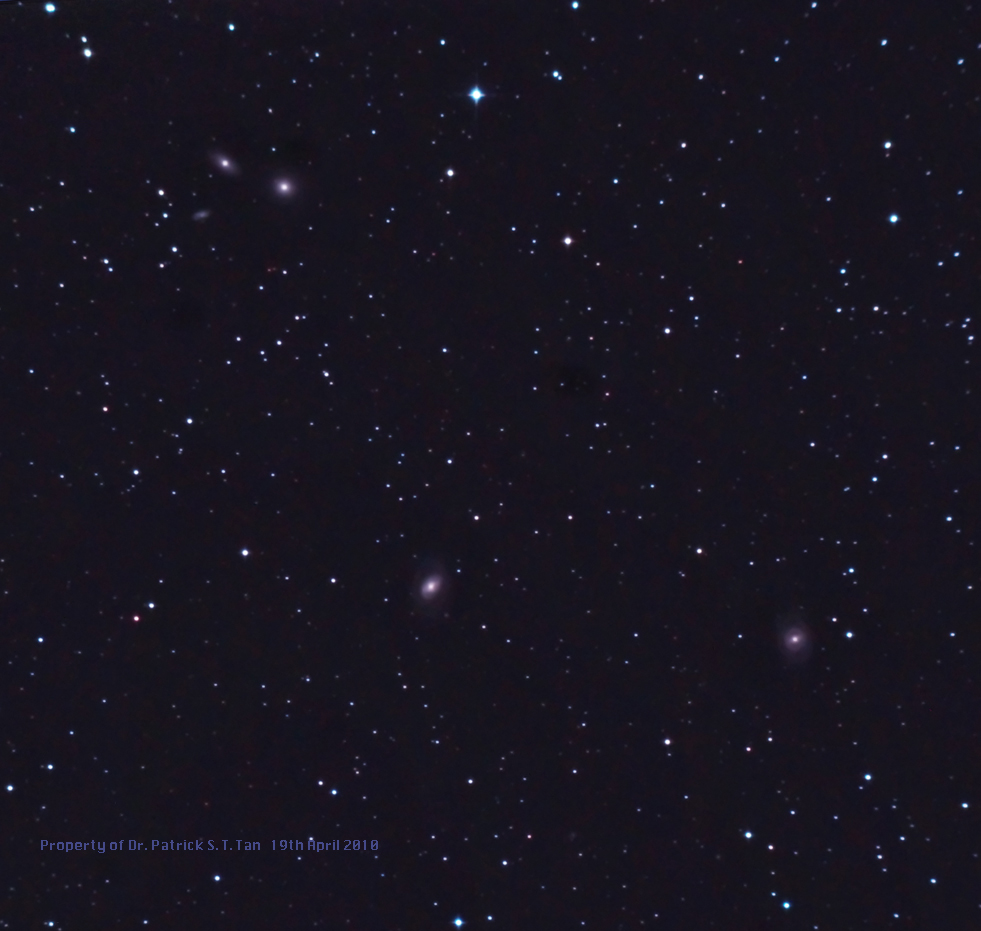
M96, M95, M105, NGC3384, NGC3389
Date: 17/04/10 Time: 2207hrs Location: Sunningwell Temperature: 9.3ēC Relative Humidity: 53%
Camera: Nikon D80 Scope: William Optics Z66 Apo Doublet at prime focus Mount: piggy-backed on Meade LX90 in equatorial mode Filter: Astronomik CLS (LPF broadband filter) Exposures: 6x10min, ISO: 1600 F ratio: 5.9 Guidance: Autoguided
The benefit of erupting volcanoes in neighbouring countries is the likelihood that air travel will be suspended and one can go through a whole night of observing and astrophotography without fear of the photograph being ruined by a vapour trail and a string of equally spaced red and green lights draped across the field of view like tasteless Christmas decorations in space. On a gloriously clear, still spring Saturday night with the moon only 3 days old and no Tilsley Park lights, I spent a record 6 hours from 9pm at night to 3am the following morning taking these astrophotographs of galaxies in Leo and Virgo - all along the same range of declination (+11° to +12°) as Denebola. First was the western set of M96 (centre of picture), 95 (lower right), 105 (lenticular top left), NGC3384 (elliptical top left), and NGC3389 (faint spiral top left). Our knowledge of the distance of M96 has improved from the estimated 30 million light years with the advent of Hubble and its advanced optics. By studying the Cepheid variable stars in M96, we now know that M96 lies as much as 38 milllion light years away, almost 10 million light years further than was previously assumed. Both M96 and M95 are actually barred spirals, not obvious from these low resolution wide-angled views. However, I love the fact that we can see so many galaxies, each made up of billions of stars, each of which in turn may have any number of orbiting planets, gaseous or rocky, all in one camera view! We are indeed specks of insignificance in an infinity of specks!
This photograph has a cumulative exposure time of 1 hour, consisting of 6 stacks of 10 minute exposures, summed using Maxim DL. The resulting image had the usual white and black point setting to stretch the dynamic range and the midtones were enhanced using the Curves command in Photoshop. The picture was finished off with one pass of Noise Ninja at its nominal settings, rotated and cropped to fit this webpage.
HOME Archive Pictures: Narrow field PICTURES: Solar system PICTURES: Wide field